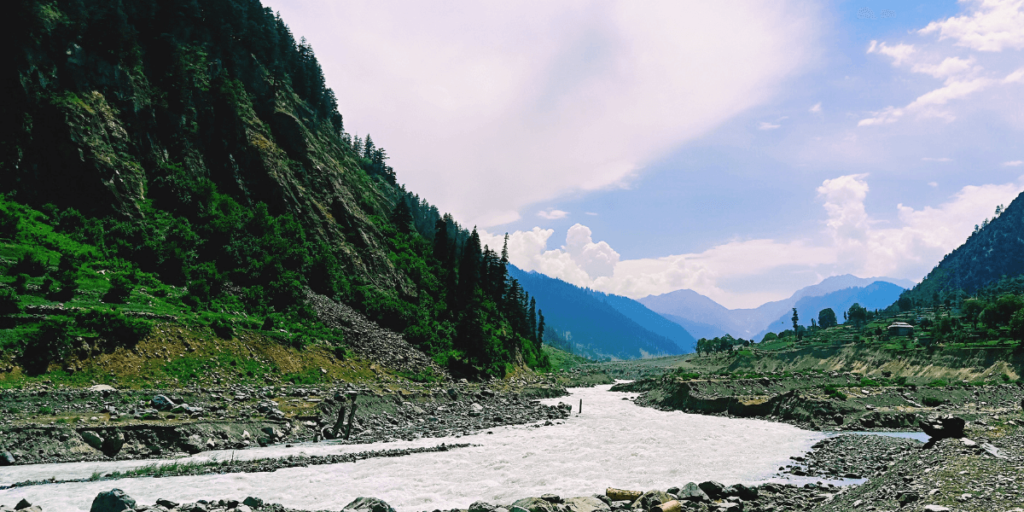Pakistan is a country that holds a rich cultural heritage that attracts a lot of travelers. The food, traditions, festivals, and historical places are worth exploring. The country is filled with beautiful scenery and outstanding desserts, ready for travels to explore. Pakistan has places with a rich history spanning thousands of years and boasts a plethora of remarkable landmarks that narrate tales of the past. From ancient civilizations to empires, the country’s diverse heritage gives us a beautiful insight into the past. The country is also the best destination for people who love to see historical landmarks.
In this blog, we have discussed a few famous historical places to give you a better idea of what Pakistan has to offer.
10 Famous Landmarks In Pakistan
Pakistan is a great destination for those who love to check out historical places. It is filled with mind-blowing sites that feature amazing interiors and takes you into a previous era.
Here are some places worth visiting.
Hiran Minar
Hiran Minar is a splendid Mughal-era monument in Sheikhupura, Punjab, Pakistan. It was constructed during the reign of Emperor Jahangir in the 17th century; this awe-inspiring structure holds historical significance and unique architectural charm.
The monument was built in memory of Jahangir’s beloved pet deer, which he affectionately called ‘Hiran.’ The emperor built this majestic minaret as a tribute to his lovely pet.
Hiran Minar stands tall at 110 meters, overlooking the surrounding landscape. The structure boasts an impressive octagonal tower with an expansive balcony encircling it.
The monument’s base features a large water tank in the complex’s heart.
The Noor Mahal
The beautiful mahal is located in Bahawalpur, Punjab, Pakistan, and is an exquisite palace that is a testament to the region’s rich architectural heritage. It was built in the late 19th century. The palace has an Islamic architectural style, makes it a unique and captivating sight. Commissioned by Nawab Sadiq Muhammad Khan IV, the Noor Mahal was initially intended to serve as a summer retreat for the royal family. However, its outstanding design and lavish interiors eventually transformed it into a palace perfect for grand celebrations and royal gatherings.
The Noor Mahal is adorned with elaborate artifacts, stonework, and stunning stained glass windows illuminating the interiors with mind-blowing colors. The palace’s halls and chambers have exquisite woodwork, intricate mirrorwork, and intricate tiles, showcasing the brilliance of that era’s artists.
Mohenjo Daro
The famous Mohenjo Daro is located in the Sindh province of Pakistan. It is an ancient archaeological site of great historical and cultural significance. Dating back to approximately 2500 BCE, it is one of the earliest urban settlements in the world and a UNESCO World Heritage Site.
The city of Mohenjo Daro was a prominent center of the Indus Valley Civilization, known for its advanced urban planning and well-organized infrastructure. The remains of this ancient city reveal a great network of streets, well-laid drainage systems, and multi-story brick houses that provide valuable insights into the daily life and culture of that era.
Archaeologists at Mohenjo Daro have unearthed a wealth of artifacts, including pottery, jewelry, tools, and sculptures.
Minar-e-Pakistan
The tall and proud standing tower in Iqbal Park, known as Minar-e-Pakistan, symbolizes Pakistan’s independence movement and is a tribute to the Lahore Resolution of 1940. The monument was constructed to celebrate the historic session of the All-India Muslim League held at this site, which marked a crucial milestone in the demand for a separate Muslim state.
The tower’s design combines modern and traditional elements, reflecting the nation’s aspiration for a progressive future rooted in its rich cultural heritage. Minar-e-Pakistan’s base represents the Islamic influence on Pakistan’s identity, while the tower showcases a blend of great architectural styles.
Surrounding the monument is a vast public park, providing a lovely space for citizens and tourists to enjoy recreational activities. Minar-e-Pakistan stands as an enduring symbol of unity, resilience, and the unwavering spirit of the Pakistani people.
Taxila City
Taxila is quite an ancient archaeological site in Punjab and is a treasure trove of historical artifacts, also a testament to the region’s rich cultural heritage. The city’s history dates back to the Gandhara civilization, which flourished from the 6th century BCE to the 5th century CE. It is situated along the ancient Silk Road and is a prominent center for trade, culture, and Buddhist learning. The remains of stupas, monasteries, and amazing sculptures found here offer valuable insights into the region’s artistic and religious past.
The Archaeological Museum of Taxila houses a remarkable collection of artifacts from the site, including sculptures, coins, pottery, and jewelry. Exploring Taxila City is like stepping back in time, immersing visitors in the complete historical era.
Katas Raj Temples
Located near Chakwal, the Katas Raj Temples are a group of well-preserved Hindu temples dating back to the 6th century. This historical site holds immense religious significance for Hindus, as it is believed to be associated with the epic of Mahabharata.
The temples are situated around a sacred pond known as the ‘Katas Raj,’ which is said to have been formed from the teardrops of Lord Shiva after the loss of his wife, Sati. The temples’ architecture showcases a great style, reflecting the cultural exchange prevalent during that era.
Katas Raj Temples serve as a testament to the rich religious diversity and architectural brilliance of the region’s ancient civilizations, attracting visitors from all over the world.
Harappa
Harappa is another prominent site of the ancient Indus Valley Civilization. It is located in Punjab and dates back to approximately 2600 BCE. Harappa represents one of the earliest urban settlements and an important archaeological site in South Asia.
The searches at Harappa have revealed an advanced city planning system with well-organized streets and brick houses. The city’s residents engaged in various trades, including pottery making, metalworking, and bead manufacturing, reflecting a sophisticated urban society.
Artifacts found at Harappa include seals with Indus script, terracotta figurines, pottery, and jewelry, all of which provide valuable insights into the region’s trade, culture, and social structure during ancient times.
Lahore Fort
The Lahore Fort is a renowned sight and a magnificent architectural wonder situated in the heart of Lahore. It reflects a mix of various dynasties that ruled the region, leaving behind a rich legacy of artistic and cultural.
The fort was originally built during the Mughal era in the 11th century and underwent significant renovations and expansions under many rulers, including Emperor Akbar, Shah Jahan, and Maharaja Ranjit Singh.
The fort’s grand entrance, the Alamgiri Gate, is a marvel of Mughal architecture. Inside, the visitors can explore various palaces, courtyards, gardens, and the awe-inspiring Sheesh Mahal (Mirror Palace), known for its intricate mirror work.
Takht-i-Bahi
Takht-i-Bahi is located near Mardan in Khyber Pakhtunkhwa and is an ancient Buddhist monastery dating back to the 1st century CE. It is nestled on a hilltop and offers breathtaking views of the surrounding landscape. The beautiful complex includes prayer halls, residential quarters for monks, and other structures reflecting the spiritual and communal aspects of Buddhist life. The mind-blowing carvings and decorative motifs found on the ruins showcase the artistic talent of that era. Takht-i-Bahi is an essential pilgrimage site for Buddhists and a valuable historical treasure for visitors seeking to delve into the region’s ancient past.
Rohtas Fort
Rohtas Fort is a grand defensive structure built by Afghan king Sher Shah Suri in the 16th century. This imposing fort stands as a testament to Sher Shah Suri’s military. The fort was constructed to serve as a stronghold to suppress local Gakhar tribes and protect against potential Mughal invasions. Its massive walls and gateways showcase the strength and strong build of the architecture. The Fort’s nestled between the Khyber Pakhtunkhwa and Punjab provinces made it an essential stronghold during various periods of history.
To Wrap It Up
Pakistan is home to many historical places and showcases brilliant cultural diversity. If you wish to explore lovely places that reflect history, then all of these offer a glimpse into the nation’s rich heritage, architectural marvels, and cultural diversity. Exploring these sites allows visitors to connect with the past and appreciate the country’s vibrant history. Whether you are interested in ancient civilizations, Mughal architecture, or tales of bravery and fortitude, Pakistan’s historical places have something remarkable to offer for every enthusiast. If you wish to plan an ideal trip, then get in touch with iMusafir.pk. We are the best travel agency in Pakistan offering excellent tour packages for all.



